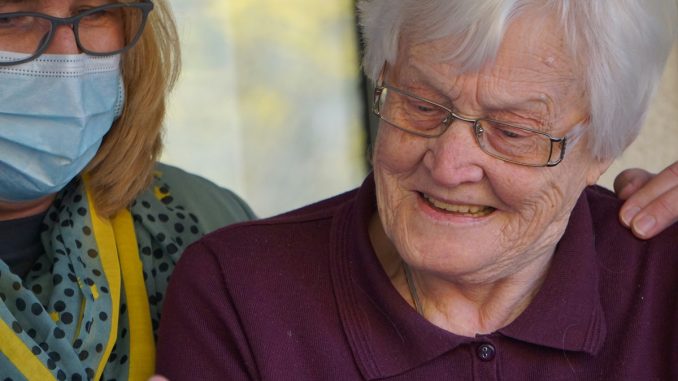
This story on low-wage workers in California is produced by the award-winning journalism nonprofit Capital & Main and co-published here with permission.
California’s new $20 minimum wage for most fast-food workers provoked plenty of conversation around the state, most of it focused on the economic impact either to franchise owners or the people who buy food there. Lost in the conversation around those numbers, and what to do about them, is any mention of who actually gets paid these low wages, let alone the millions of Californians who work in other jobs at the statewide minimum of $16. That picture of low-wage workers deserves a closer look.
For those who conjure images of high school kids flipping burgers for peanuts on their way to better jobs, a reality check is in order. Roughly half of California’s low-wage workers are 35 years old or older—and more than a quarter of them are at least 50. Meanwhile, among the group of workers ages 16 to 24, many are the heads of households or putting themselves through school.
The worker at the Taco Bell drive-thru doesn’t represent the largest low-wage group, either. That distinction is held by the state’s home health-care and personal-care aides, part of a workforce being deployed to look after California’s rapidly growing senior population, including many low-income elderly people who cannot afford to pay for their own care.
And no matter who is doing the work, they aren’t being paid enough to afford housing in many parts of the state. In California’s major metro areas, even someone who earns well above the minimum wage will find that housing costs quickly soar out of their range.
These demographics and other information come from a four-part report released last month by the state’s nonpartisan Legislative Analyst’s Office. The office’s goal, the report said, was to examine the plight of low-wage workers and, among other things, assess whether the minimum wage is set too high or too low.
On balance, the report found that the answer was neither. But that’s not the same as saying that people earning such low wages have a fighting chance at a decent life.
“In the most basic sense, the statewide minimum wage is much higher than a ‘poverty wage,’” the report’s authors wrote. “At the same time, the state’s high housing costs make it extremely difficult for many low-wage workers to make ends meet.”
Although the report focused on the minimum wage, it actually defined low-wage work in California as anything that had a median hourly pay rate of $17.50 or less. For data, the Legislative Analyst’s Office relied on the 2023 Occupational Employment and Wage Survey, as well as monthly Current Population Surveys.
But some of its most interesting work was simply revealing who California’s low-wage workers really are. Without understanding that, local and state leaders have almost no shot at crafting policies that can make a difference either in their lives or to the state’s economy.
This is not an insignificant group. One third of the state’s 19 million workers earn less than $18 an hour, according to a recent report by the Public Policy Institute of California. Nearly a third are immigrants. Roughly 40 percent live with at least two other workers, likely the result of skyrocketing housing costs, the Legislative Analyst’s Office’s report says.
And fast-food stereotypes notwithstanding, home health-care and personal-care aides make up the lion’s share of these low-wage jobs. Three quarters of the people working in those fields are connected with the state’s In-Home Supportive Services program, or IHSS, which uses a mixture of local, state and federal funds to pay caregivers who help low-income individuals stay safely in their homes and communities.
The wage plight of these IHSS workers has been known for years; it occurs through a fragmented system in which individual counties set their own rates and health-care workers often join unions to fight for better pay. These people will not benefit from recent raises given to other classifications of health-care workers in the state. The need for IHSS workers continues to grow, but with wages set so low, it’s not at all clear that the need will be met.
Fast-food workers are the next largest low-wage group, although that changes with the new $20 minimum taking effect. They’re followed by cashiers, retail salespeople, waiters and farmworkers. Most are Latino; according to the Legislative Analyst’s Office, the number of low-wage Latino workers is two and a half times that of white workers.
And put simply, the state’s minimum wage, despite having doubled in a decade, doesn’t come close to covering the cost of living in most parts of the state. The analyst’s office’s report found that housing is unaffordable in all but three of California’s 58 counties—Modoc, Trinity and Colusa—for minimum-wage earners who are single parents and have at least one child.
While several cities, including Los Angeles and several cities around the Bay Area, have mandated their own minimums that are above the state law, many high-cost areas don’t have any such policy. The office’s report found that among five of the state’s nine most expensive counties—Marin, Monterey, Orange, Santa Barbara and Santa Cruz—only a single city, Novato at $16.86, had a local minimum wage above the state requirement.
The housing crisis in California won’t be eased anytime soon. It’s all the more reason for legislators to take a closer look at what the minimum wage actually does—and what it doesn’t do. Absent a sudden surge in activity by the counties or individual cities themselves, it may ultimately fall to the state to require a wage that gives more than 6 million workers a chance to survive.




Be the first to comment